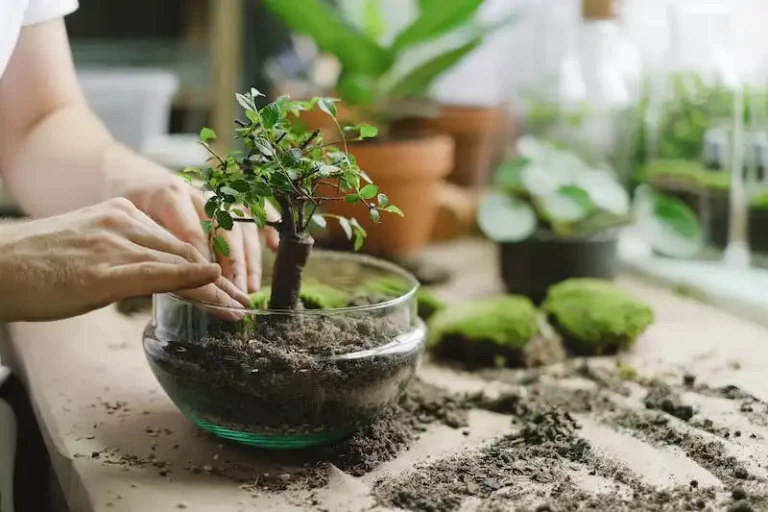Japanese anemones are gorgeous flowers that are popular in gardens all over the world. They are either white or pale pink in color, and they have stunning flowers that bloom in late summer to early autumn. Japanese anemones, also known as windflowers, are a perennial plant that can grow to a height of around 3 to 4 feet. They love sunlight and can be grown in most gardens with ease.
Japanese anemones have many desirable properties that make them a wonderful addition to any garden. They are known for their ability to attract birds and butterflies, adding a touch of nature to your space. These plants are also fairly low-maintenance, making them perfect for busy gardeners. They are resistant to most pests and diseases, although some gardeners may encounter issues with slugs or snails. A variety of Japanese anemone, called var. japonica, is a compact hybrid that won’t take over your garden.
If you’re looking to grow Japanese anemones in your garden, here are a few tips to help you get started. First, make sure to plant them in a sunny spot in your garden. They love sunlight and will thrive when given ample exposure. Second, choose the right variety of Japanese anemone for your needs. Some popular varieties include ‘Honorine Jobert’ with its tall white flowers, ‘Pamina’ with its pale pink blossoms, and ‘September Charm’ with its gorgeous pink flowers that have a streak of white.
When it comes to planting Japanese anemones, you’ll want to do so in the spring. They can be planted either in the front or back of your garden, depending on your preference. Make sure to apply a layer of compost or well-rotted manure to the soil before planting, as this will help provide the necessary nutrients for the plants. The plants should be spaced about 18 to 24 inches apart to allow for proper growth.
Japanese anemones bloom in late summer to early autumn and will continue to flower intermittently throughout the season. To keep the plants looking their best, make sure to deadhead the flowers as they start to fade. This will encourage new blooms to appear and keep the plant looking tidy. Japanese anemones are also great as cut flowers, so consider bringing a few indoors to enjoy their beauty.
In conclusion, Japanese anemones are a beautiful addition to any garden. With their stunning flowers, low-maintenance nature, and ability to attract birds and butterflies, these plants are a must-have for any gardener. Whether you’re a beginner or an experienced gardener, growing Japanese anemones is a job that anyone can do. So why not give them a try and enjoy their beauty year after year?
Illustrated variety of Japanese anemone
For more information about growing Japanese anemones and other perennial plants, visit our website.
Source: gardeningwebsite.com
How to grow Japanese anemones
Japanese anemones (var. japonica) are beautiful garden plants that are loved for their elegant flowers that come in shades of white, pink, and more. They are a favorite among gardeners because they’re easy to grow and require little maintenance.
Japanese anemones are tall and long-lasting plants that are considered to be some of the best perennials. Breeders have created a wide variety of this plant over the years, giving gardeners plenty of options to choose from.
These anemones begin growing in spring and continue to bloom through the summer. They prefer a spot in the garden that receives partial sunlight, although they can also tolerate full sunlight. Japanese anemones require well-drained soil and don’t like to be overwatered.
Propagation of these plants can be done through dividing the clumps or from seeds. Many gardeners prefer to divide the clumps since it is an easier and quicker method. Dividing the clumps should be done in early spring or fall, and the new divisions should be planted in their new spots immediately.
Where to plant Japanese anemones
Japanese anemones are versatile plants that can be planted in various locations in the garden. They can be used as border plants, accents in the front of beds, or as a background plant for smaller ones. They are also great for filling in empty spaces in the garden.
These plants have windflowers on tall stems, and they look most beautiful when planted in groups. They can reach a height of 3 to 4 feet, so it’s important to choose a suitable location where they won’t overshadow smaller plants.
How to care for Japanese anemones
Japanese anemones are low-maintenance plants, but there are some tips to ensure their optimal growth. They prefer well-drained soil and should be watered regularly, especially during dry spells. Applying a layer of mulch around the plants can help retain moisture and keep the soil cool.
These plants are perennials, meaning they will come back year after year. However, they may need some control to prevent them from spreading too much. Regular deadheading of spent flowers will help prevent them from self-seeding and taking over the garden.
In conclusion, Japanese anemones are beautiful flowering plants that are easy to grow and require little care. With their variety of colors and compact size, they can enhance any garden. For more information on the different varieties and where to find them, visit your local garden center or explore online gardening sources. Get ready to enjoy the beauty of Japanese anemones in your own garden!
Where to plant Japanese anemones
Japanese anemones are long-lived perennials that can add a touch of beauty to any garden. It is easy to propagate these plants, making them a popular choice among gardeners. They are known for their unusual fluffy flowers that come in a variety of colors, such as white, pink, and even purple. Japanese anemones are late-flowering plants, appearing in the garden from late summer to early autumn.
When deciding where to plant Japanese anemones, it is important to consider their growing requirements. These plants love a sunny or partially shaded spot in the garden. They can tolerate different soil types, but a well-drained soil is ideal for their growth. Japanese anemones won’t grow well in wet or waterlogged conditions, so make sure to choose a location where the soil doesn’t retain too much moisture.
Japanese anemones can be planted either in the front or at the back of a flower border, depending on their height. Some varieties, like the compact ‘Whirlwind’, stay under 3 feet tall, while others, like the tall ‘Honorine Jobert’, can reach up to 5 feet in height. These plants also work well when planted in groups or masses, creating a gorgeous display of flowers.
One important thing to note about Japanese anemones is that they have spreading tendencies. While they are not considered invasive, they do spread over the years, forming clumps. If you want to keep them in check, it’s a good idea to apply caution while planting them near other perennials. Giving them enough space to spread will prevent overcrowding and competition with other plants.
Japanese anemones can also be planted under trees, as they tolerate the dappled shade provided by the tree canopy. They have a maple-shaped foliage that adds interest to the garden even when they’re not in flower. This makes them a fantastic choice for planting under deciduous trees, where they can enjoy the sunlight in early spring before the trees leaf out.
If you’re looking to attract birds to your garden, Japanese anemones are a great plant to consider. The nectar-rich flowers of these plants are loved by bees and butterflies, making your garden a haven for pollinators. The windflowers also provide seeds that some birds enjoy, adding extra wildlife interest to your garden.
In summary, when growing Japanese anemones, choose a sunny or partially shaded spot with well-drained soil. Consider their height and spreading tendencies when deciding where to plant them in your garden. Don’t forget to give them some space to spread and grow. These beautiful late-flowering plants are sure to add a touch of elegance to any garden.
How to care for Japanese anemones
Japanese anemones are a popular perennial plant that is grown for its beautiful late-flowering bloom. They are available in a variety of colors, including white, pale pink, and streaked varieties. These gorgeous plants can grow to a height of up to 5 feet and have long-lasting blooms that can last through the spring and into the fall.
If you’re starting with root plants, plant them in the front of the garden, as they tend to be compact and won’t need staking. Japanese anemones are happiest when grown in well-drained soil that is rich in organic matter. They love full sun but can tolerate some shade. It’s best to plant them in a location where they will receive at least six hours of sunlight per day.
Japanese anemones are quite easy to care for. Once planted, they don’t require much maintenance. They have a long growing season and will bloom year after year. However, there are a few tips to keep them looking their best:
Watering:
Japanese anemones like to be kept evenly moist, so make sure to water them regularly, especially during dry periods. Try to avoid overwatering, as this can lead to root rot.
Propagation:
If you love Japanese anemones and want to propagate them, it’s best to do so in early spring when the plants are just starting to grow. You can divide the plants by digging up the clumps and separating them into smaller sections. Replant the sections in the desired location and water them well. The new plants should establish themselves quickly.
Pests and diseases:
Japanese anemones are generally pest and disease-resistant, but they can occasionally be attacked by slugs and snails. To control these pests, you can use organic slug pellets or create barriers around the plants using copper strips or crushed eggshells.
Wildlife:
Japanese anemones are loved by birds, so don’t be surprised if you see them visiting your garden. These plants provide a source of nectar for birds and can attract beneficial insects like bees and butterflies.
In conclusion, Japanese anemones are a beautiful and long-lasting perennial plant that can add a touch of elegance to any garden. With a little care and attention, they will thrive and provide blooms year after year. So, if you’re looking for a gorgeous and low-maintenance flower, Japanese anemones are an ideal choice.
Source: Illustrated Guide to Growing Japanese Anemones
| Key Points |
|---|
| Japanese anemones are a popular perennial plant that blooms in late-flowering. |
| They come in a variety of colors and can grow up to 5 feet in height. |
| Plant them in well-drained soil with at least 6 hours of sunlight per day. |
| Water regularly and propagate in early spring. |
| Control pests like slugs and snails using organic methods. |
| Japanese anemones attract birds and beneficial insects. |
| They are a low-maintenance and beautiful addition to any garden. |




